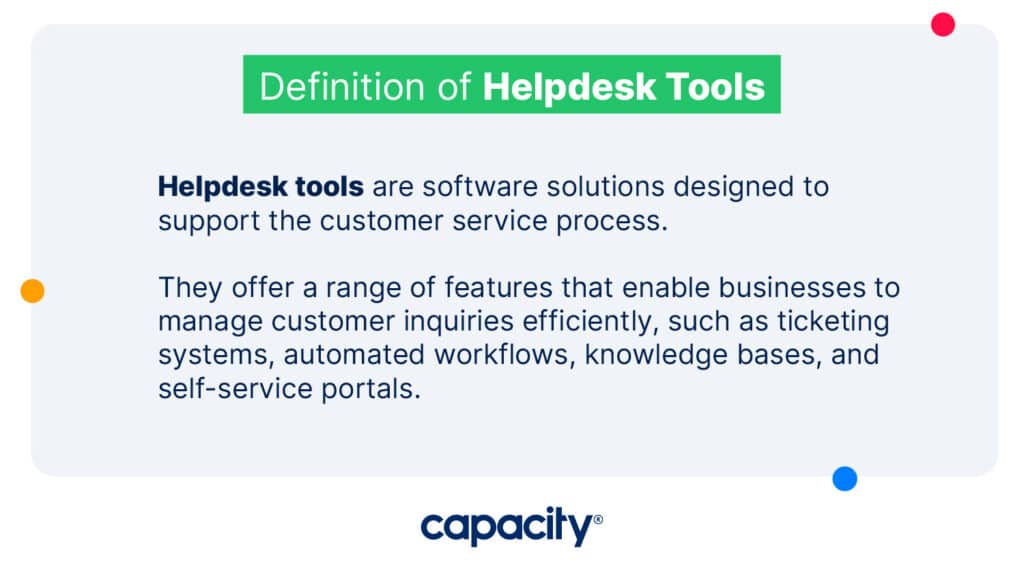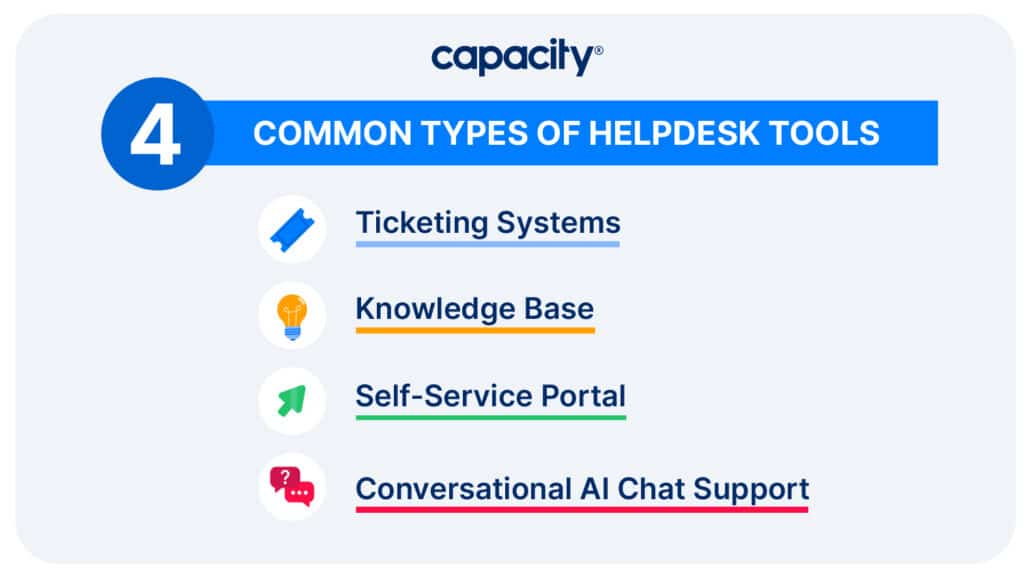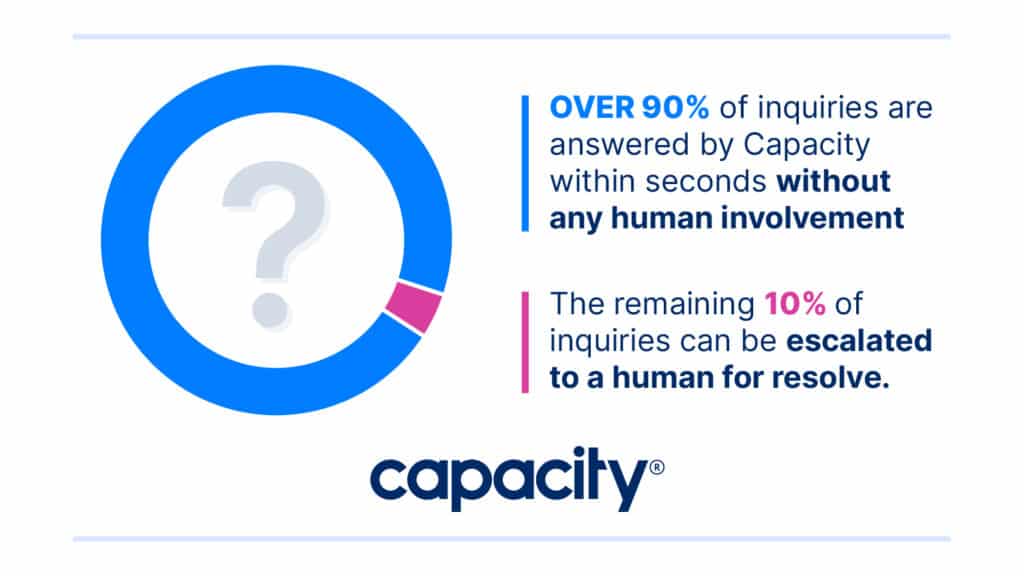Helpdesk tools are the backbone of modern customer service. They are essential for providing support to customers and keeping businesses running smoothly. However, the full potential of these tools can be overlooked due to their complexity. A comprehensive understanding of how helpdesk tools work and which features they offer can unlock powerful benefits for both businesses and customers. In this article, we’ll explore the fundamentals of helpdesk tools and highlight some key ways they can improve customer service.

What are Helpdesk Tools?
Helpdesk tools are software solutions designed to support the customer service process. They offer a range of features, such as ticketing systems, automated workflows, knowledge bases, and self-service portals, enabling businesses to manage customer inquiries and issues efficiently. By streamlining and automating specific processes, helpdesk tools can help improve customer satisfaction and reduce operational costs.
4 Common Types of Helpdesk Tools
Regarding helpdesk tools, the possibilities are endless – but don’t worry! We’ve broken them down so you can make sense of it all. Here are some of the most common types of helpdesk tools available:
1. Ticketing Systems
Ticketing systems provide an efficient way for customer service teams to track and respond to customer inquiries. These tools enable businesses to create tickets for each customer issue, assign them to the appropriate agent, set priority levels, and track progress until resolution.
With automated ticketing systems, businesses can streamline their customer service processes and reduce customer wait times. Automated ticketing systems provide more efficient workflows that help prioritize customer inquiries, quickly route them to the right agent, and identify trends in customer behavior.
2. Knowledge Base
Knowledge bases are an excellent way for businesses to store information about their products and services and make them easily accessible to customers. These tools enable businesses to create a database of frequently asked questions and other helpful resources that customers can access through a self-service portal.
Knowledge bases can also be used for internal support. This type of tool allows customer service teams to store information related to company policies, procedures, and processes in a centralized location. Making this information easy to access helps customer service teams quickly resolve customer inquiries by providing accurate answers from a reliable source.

3. Self-Service Portal
A self-service portal is an online platform that enables customers to find answers to their queries without contacting customer service. These portals are typically integrated with a knowledge base and offer customers access to resources such as product guides, tutorials, and FAQs.
Self-service portals are great for both customers and employees. For customers, they provide an easy way to find answers to their questions without having to wait for a response from customer service. This helps reduce the time customers wait for their inquiries to be answered, improving overall customer satisfaction. For employees, self-service portals allow customer service teams to focus on more complex questions, freeing up their time and enabling them to provide better support.
4. Conversational AI Chat Support
Conversational AI and chat support tools allow businesses to connect with their customers in real-time via instant messaging or live chat. These tools enable agents to respond to customer inquiries quickly and efficiently, improving the overall customer experience.
Conversational AI can understand complex human language and customer inquiries, utilizing natural language processing and machine learning to respond accurately to customer questions and provide the best possible solution. AI-powered tools are essential for businesses looking to offer a seamless customer experience.
3 Benefits of Utilizing Helpdesk Tools
Helpdesk tools can provide tremendous benefits to businesses of all sizes. Let’s look at the top 3 perks of utilizing a helpdesk tool:
1. Maximize Efficiency
Helpdesk tools help businesses maximize their efficiency by streamlining customer service operations. These tools enable companies to respond quickly to inquiries, prioritize customer issues, and identify trends in customer behavior. This helps reduce operational costs and improve overall customer satisfaction.
2. Enhance Customer Experience
Helpdesk tools enhance the customer experience by providing customers with an easy way to find answers to their questions. Through self-service portals, customers can access a database of helpful resources and quickly find solutions to their inquiries. This helps reduce the time customers wait for their issues to be resolved, improving overall customer satisfaction and happiness.
3. Better Support
Helpdesk tools help customer service teams provide better support by giving them access to a centralized database of information related to products and services. This allows agents to quickly find the answers customers need, helping them provide accurate and timely support. Additionally, helpdesk tools enable customer service teams to identify common inquiries or trends in customer behavior that can be further analyzed for potential areas of improvement.

Best Practices for Implementing a Helpdesk Tool
When implementing a helpdesk tool for your business, there are some best practices that you should keep in mind:
- Ensure that the helpdesk platform can integrate with other customer service systems and tools to maximize efficiency and streamline operations.
- Create a knowledge base of resources to enable customers to find answers quickly and easily.
- Ensure customer service agents have access to the necessary information and resources to provide quality support.
- Monitor customer interactions with the helpdesk platform and use analytics to improve customer experience.
- Provide regular reports on performance metrics for both customers and employees so that you can analyze trends and make improvements accordingly.
- Ensure that the helpdesk platform has a secure infrastructure to protect sensitive customer data.
By following best practices, you can be sure your helpdesk tool is set up for success and provides maximum value for customers and employees.
Meet Capacity: Your Top Helpdesk Tool
Capacity is the ultimate helpdesk tool to help businesses provide superior customer service and exceptional support. With its powerful analytics and automation capabilities, Capacity gives businesses the ability to quickly identify customer trends, prioritize inquiries, and scale operations as needed.

This advanced platform allows companies to quickly monitor customer interactions in real time and customize their support strategies to fit the unique needs of their customers. Capacity offers an intuitive user interface and comprehensive customer service tools, allowing agents to provide fast, accurate service with minimal manual effort.
In short, Capacity is the perfect helpdesk solution for businesses looking to take their customer experience to the next level. With its robust capabilities and advanced features, Capacity is sure to provide the best customer service for your business.
Ready to see for yourself? Try for free today!





